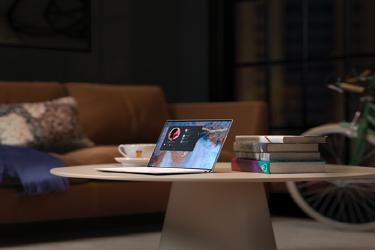
In one of my previous articles What you need might be a project manager app, even solo I argued for the need for a project manager app even for your personal productivity. While I still believe this might be correct in more cases than you expect, I went too much on the deep end with this. I recently started to run into issues with my current system and decided to reflect on why that would be. I realized that I was trying to bridge the gap between 2 paradigms without realizing and being explicit about it. While they’re not opposite and exclusive, they are very different in their goals and features, which means you have to be aware of them.
Top-down Productivity
Top-down is the “classic” way of doing productivity that everyone thinks about when they think about planning. You take a goal or a project you want to achieve, and then you split it into chunks to be done. This setup works great in many situations like teamwork, organization/company, long-term goal, big and complicated project.
Teamwork is the most common cause for this to be used; if you plan small chunks, it’s a lot easier to give them to others, ensuring everyone works in the same direction. Single Lego bricks are a lot easier to share than a full castle. Top-down planning will also require project management to see the dependencies, flow, and planning over more extended periods and keep track of all the pieces.
There are some cons to this system, though. To be most effective, you need to have a clear vision and goal to reach; it cannot be “we’ll find it when we get there.” You need to align everyone and make sure all the little tasks get done in the correct order to succeed. That means you need an understanding of how things will unfold to an extent. You also need to know what is the best ordering for steps and your output capacity. Capacity is “How much time can you give this project in a given week” then, if you take a time estimate on the project, it will give you a deadline.
If your projects and tasks usually fall into those categories and patterns, I would suggest looking into that article What you need might be a project manager app, even solo or give a project manager app a look; a good one would make a big difference.
Bottom-up Productivity
Bottom-up productivity is a lot less defined, by design, and a lot freer. You usually start with tasks instead of a project and let those tasks grow in importance or generate enough sub-tasks than it becomes clear it’s a project. At that point, you create a project with those tasks with goals and tasks to reach it.
That way of doing productivity is a lot more organic and can feel more natural to many peoples. The nice thing with this way of doing things is that there’s not much structure; you let things emerge and grow by themselves like a garden. This setup will work wonder for research, creative work, and other things where your passion and drive are essential. When you’re not sure how you’ll get somewhere, but you’re certain you want to get there.
There are also some cons to this setup. It requires a powerful vision of where you want to go in your life or career, a north star; otherwise, you will get lost in the weeds. Since there’s no clear structure guiding you toward the end of a project or a goal, you need to be able to reorient yourself toward that north star quickly. That is also why drive and passion are the main drivers here; it will require exploration and creativity to get closer to the north star with each project. Without those or a clear vision, you could end up going in circles for a long time or worst, backward, all the while following the system.
Those attributes make it very well suited for more creative endeavors and work. That system could have more trouble working in a team setup unless the same drive and direction guide every team member. Since there’s a lot less structure, it can work in any app and system, even note application, no real need for anything special other than a todo list, and some thinking time.
Hybrid, my system
After that reflection, it became clear to me that what I needed was a hybrid system. Since I’m handling both personal and work projects (to an extend) and both creative (this article) and more structured projects (coding), I needed both. But the question became, how to make it work? What I ended up with is those principles below, in no particular order:
- Keep track of project advancement (top-down) and deadlines, if any, in a Kanban board.
- Generate project on the fly as needed (bottom-up) instead of in advance since things change as you go along
- Plan quarterly, monthly, and weekly to make sure all pieces are going in the right directions (top-down)
- Have a clear, precise goal written down (both)
- Write down and plan steps you already know are essential (top-down)
- Add as little structure as possible to drive your day-to-day and get things done (bottom-up)
- Don’t fear stopping midway if you find something better, more suited, or more interesting that can bring you to the goal (bottom-up)
As you can see, I went with pieces of both to try and play more on their strengths. In more concrete terms, I stopped using ClickUp and switched back to Todoist. The main reason was because of ClickUp slowness and heaviness with quick capture. Since I want more structure-free day-to-day, I require a rapid and easy capture of tasks so they can get in the system and out of my head. Todoist also recently added board views, which are Kanban boards that I can use to track project stages and progress.
From there, I can quickly see if a “task” is indeed a task or a project because of prior experiences. If it’s a project, I can create it in Obsidian in my PARA system and add it to my board view in Todoist. Todoist is also where I keep track of my weekly, monthly, quarterly project and their current state (ongoing, paused, review, done) to quickly see what’s on my plate now and what’s coming.
Since I am also using the 5 project rules, adding a project, will means putting another project on ice while I finish this new one. Putting a project on the ice like this is relatively low cost in my setup, other than the need for a permanent ice reserve. One of the reasons for this is that I’m writing down everything I do in a running log for each project (more on this here, Literate Doing, Write everything you do) and keep everything related to projects in their PARA folders. That means coming back to a project, even weeks later, is just reading the log to get back where I was and start again. If I know, I might put that project on pause for longer (vacation, switch in priority, etc.) I will often add a summary of the current state and the following steps at the bottom of the log.
Once I have the current queue of 5 projects updated, I will take some time to fill in deadlines, goals, and, if possible, the steps to finish the new project. Then I need to “start doing the thing"TM. This might seems like an elaborate system, but really in most cases, we’re talking 5 to 10 minutes to do all of this setup. In some cases, if I know a project won’t last long (1-2 days) and it’s a well-defined project, I might even skip some parts and get it down to under 5 minutes.
The system’s speed comes from the fairly low structure (one board view, one project note, and folder, some todos and how I’m doing the project itself. Writing everything down and keeping stuff together in the same folder structure adds to the speed and is from the bottom-up processes. The chunking down into know tasks, the view of my various project per time frame (weekly, monthly, quarterly), and management of capacity with those views are more top-down ways. Together this gives me a lot of flexibility in tasks and projects, even with a very high project turnover. I can also easily double down on top-down or bottom-up as needed for each project since all the tools and frameworks are flexible enough to handle it.


